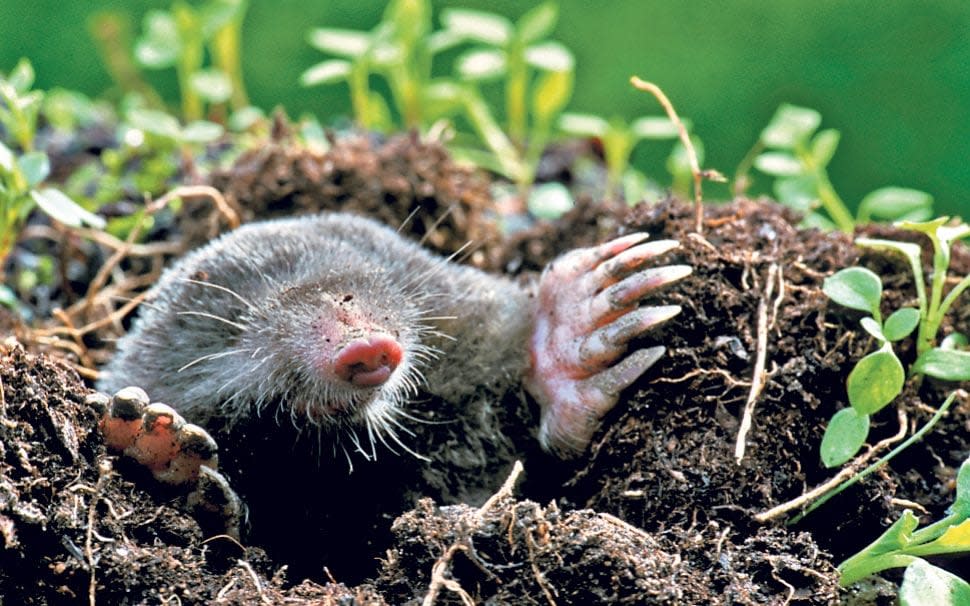How to deal with moles in your garden (no whacking required)

For somebody who finds clover more beautiful than grass, it follows that the presence of a mole in the garden is met with interest, rather than despair. Clearly, my patch contains the cycle of life. Moles eat leatherjackets, chafer grubs and other larvae under the lawn – while their powerful shoulders and paddle-like hands aerate the heavy clay, fertilising it and tossing up friable soil.
They in turn are preyed on when very young by tawny owls, who also keep the rodent population down. A patch of grass where the mole hill has been scraped away is the perfect place to sow clover.
However – I live with a grass enthusiast, whose response to our only mole incident was a sonic mole repeller. Soon, mole hills appeared in the sheep field over the hedge. With moles, you have a choice: persuade them to move along, or kill them.
I realise now that we were simply passing the buck to the shepherd. Moles are not good for cud-chewing animals; they dig up bacteria naturally present in soil, causing listeriosis, particularly in silage. Added to this, mole hills trip animals.
William of Orange died when his horse stumbled over a pile of earth, breaking his collarbone, followed by fatal pneumonia. Even now, certain groups toast “the little gentleman in the velvet waistcoat” and its notoriety persists.
“I kill moles because they’re a bloody nuisance,” says our local catcher, in rural Leicestershire. He operates mainly on farms and at the village sports club. He relies on the scissor or “French” trap – which would be better if it was a guillotine, rather than a chest-crushing box that activates two spikes.
These traps need to be checked every day in case the animal is not killed immediately. An alternative is death by drowning, he suggests, with a gushing hosepipe.
This doesn’t always work, as moles are excellent swimmers (hooray). “Moles will go anywhere with wet ground and worms,” the mole catcher says. For gardeners who care about their garden’s soil health, let alone a sense of formality, mole activity seems a poor trade-off.
“What really gets me is when they go down the edge of the lawn,” says the head gardener at Coton Manor in Northamptonshire, Richard Green. “The grass collapses where the tunnels have been, so it gets very uneven. People could twist their ankles.”
Moles are a health and safety issue for gardens that rely on visitors. For 40 years, Green has been battling with a mole called Gerald, named after the John Le Carré character in Tinker Tailor Soldier Spy. With every successful trapping, another mole pops up, in a real-life version of whack-a-mole. Coton Manor is not only immaculate but accommodating, with Mille Fleur d’Uccle bantams wandering around the borders, and flamingos by the stream.
When asked for the mole’s ranking in a pantheon of pests, Green puts it fourth after rabbits, squirrels and mice. “In the kitchen garden, they’ll come along and rootle up all your shallots, as soon as you’ve planted them,” he says, laughing. “They know where a seed drill is.”
At a large private garden in Wiltshire that is certified organic and run on biodynamic lines, the sudden appearance of mole hills on the striped lawn can be a little awkward for the head gardener, whose job it is to remove them. Phylip Statner, of Hazelbury Manor, does not get too worried: “It’s so rare that they’re an issue.”
Recently, a velvet visitor was asked to leave. Addressing a mole hill, Statner used the following tone: “Now come on. I could do with a bit of help here; you’ll need to move somewhere else.” To his surprise – and everyone else’s – the mole has not been seen since.


